

CURB APPEAL
BOLDER AND WIDER May / Jun 2025
ROOFING MANUFACTURERS
PREDICT A STRONGER 2025

Castle Building Centres Group Ltd. is a Canadian member-owned, Lumber, Building Materials and Hardware buying group representing over 300 member locations across Canada.
Contractor Advantage Magazine is the exclusive publication of Castle Building Centres Group Ltd. featuring quality Castle vendor brands available at Castle Building Centres locations.
Visit castle.ca to find a Castle location in your area.
Editorial Director Castle Castle Building Centres Group Ltd.
Jennifer Mercieca
Art Direction and Design Espress Labs Inc.
Contributors
Lawrence Cummer
Lisa Gordon
Advertising Inquiries and Marketing Contact
Jennifer Mercieca
Director of Communications
Castle Building Centres Group Ltd.
905-564-3307 jmercieca@castle.ca
Material Contact
Linda Saaman
Marketing Administrative Assistant
Castle Building Centres Group Ltd.
905-564-3307 ext 219 lsaaman@castle.ca
Published and designed exclusively for Castle Building Centres Group Ltd. by Espress Labs Inc.
On the cover: Doman Building Materials
ABOUT CONTRACTOR ADVANTAGE

MAY / JUNE 2025
Volume 30 Issue 3
CONTRIBUTORS CONTRIBUTORS



LAWRENCE CUMMER
Lawrence (“Law”) Cummer is a freelance writer and editor and has been a frequent contributor to Contractor Advantage, Ideas and Rough Construction for nearly a decade. Over his more than 20-year career, Law has written about contracting and construction, general business, information technology, health and safety, personal finance and almost every topic in between. He has a passion for storytelling and sharing how people can work better, easier — and “smarter” — from contractors to technologists to business executives.
Lisa Gordon is a freelance writer and editor based in Port Dover, Ontario. For nearly 25 years, she has specialized in creating custom content for trade and association magazines, websites, newsletters and marketing materials. Contact her at mustangmediaservices.ca.
KATE ZABRISKIE
Kate Zabriskie is the president of Business Training Works, Inc., a Maryland-based talent development firm. She and her team provide onsite, virtual, and online soft-skills training courses and workshops to clients in the United States and internationally. For more information, visit www.businesstrainingworks.com.
LISA GORDON
BOLDER AND WIDER
When it comes to exterior siding, homeowners lean toward durability and efficiency with a healthy dose of style.
It starts innocently enough. You want to ensure everything runs smoothly, so you check in often. You spot a typo in a presentation, so you fix it yourself. Someone misses a minor detail, and you think, “I’ll just handle it next time.” Before long, you’re reviewing every email, sitting in on every meeting, and wondering why your team can’t seem to get anything done without you.
The roofing category has experienced a dip over the last few years, but things are looking up for contractors this year, according to leading Canadian roofing vendors.

Photo courtesy of Doman Building Materials

BOLDER AND WIDER
When it comes to exterior siding, homeowners lean toward durability and efficiency with a healthy dose of style
Written by Lisa Gordon
The Canadian residential construction industry has seen a momentous shift toward personalization and expression over the past few years – and manufacturers have responded, increasing their product portfolios to match consumer preferences.
When we drive past a home, one of the first things we notice is colour and style. In fact, exterior cladding is one of the biggest contributors to curb appeal. Here, we survey select manufacturers to identify 2025’s hottest trends in residential siding and cladding.
WESTMAN STEEL INDUSTRIES
WGI Westman Group Inc. (WGI) was founded in Winnipeg in 1976. Westman Steel Industries is one of five WGI divisions, opening its seventh Canadian manufacturing plant in 2024.
Greg Gardenits is National Director of Sales and Marketing for Westman Steel Industries. He has spent over 11 years with the Canadian family-owned business and noted that Westman Steel is the country’s largest manufacturer in its category and a coast-to-coast supplier of metal roofing and cladding.
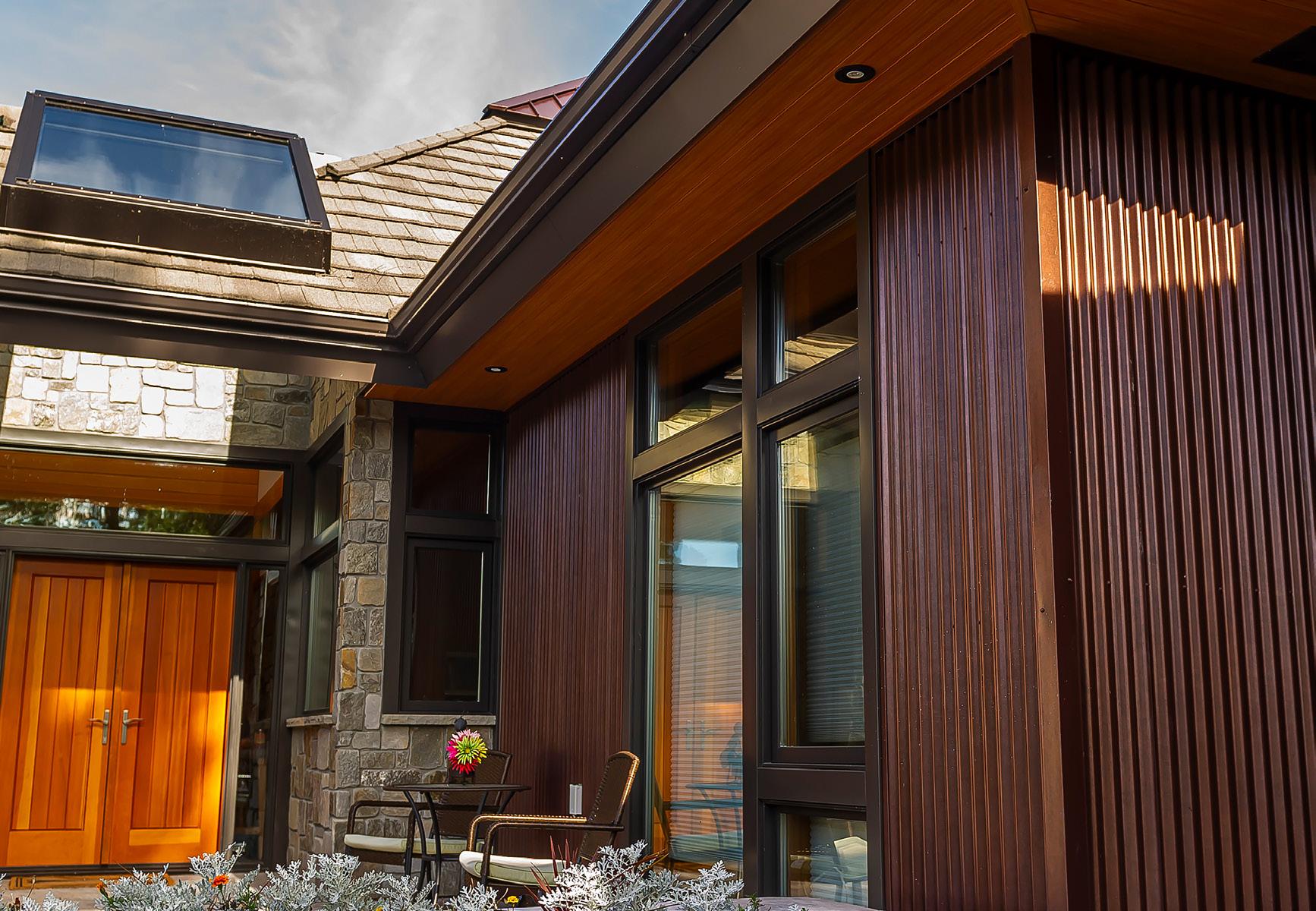
Photo courtesy of Westman Steel Industries

Commenting on trending styles, Gardenits described Westman’s 12-inch vertical board and batten as the hottest up-and-comer, because it adds a new look and texture to a home’s exterior.
The uptick in extreme weather events in Canada has prompted more people to choose steel for their home’s cladding, he added. Not only is it recyclable, meeting the needs of the environmentally conscious, but it is also very durable.
Calgary, for instance, has experienced devastating hailstorms that have destroyed the sides of houses, Gardenits stated. However, “steel is harder to dent and won’t be penetrated by hail when installed against a solid wood substrate.”
Devastating forest fires that ravaged parts of the country have spurred requests for more non-combustible products.

“We have seen some major fire events the past few years, throughout British Columbia and, of course, Jasper.” Gardenits said this has even caused insurance companies to push for more non-combustible materials.
The rise in the popularity of steel cladding has nudged Westman Steel Industries to expand its colour palette. Starting in 2025, Westman’s 28-gauge profile will now offer up to 53 shade options, although dark colours and matte finishes are still trending.
Gardenits said designers, contractors and consumers are finding Westman Steel’s seven-eighths inch corrugated siding a very versatile product. “We are even seeing people
use it inside homes for interior walls and feature walls, as well as skirting for decking and raised flower beds.”
Consumers also appreciate that steel siding is practically maintenance free and is covered by strong warranties. It’s a “put it up and forget about it” type of product that only needs to be hosed off every now and then.
Commenting on the current tariff situation between Canada and the U.S., Gardenits concluded by pointing out that Westman Steel’s products are Canadian-made, including sourced steel, so he feels they are well positioned to handle continued supply and demand.
Photos courtesy of Westman Steel Industries
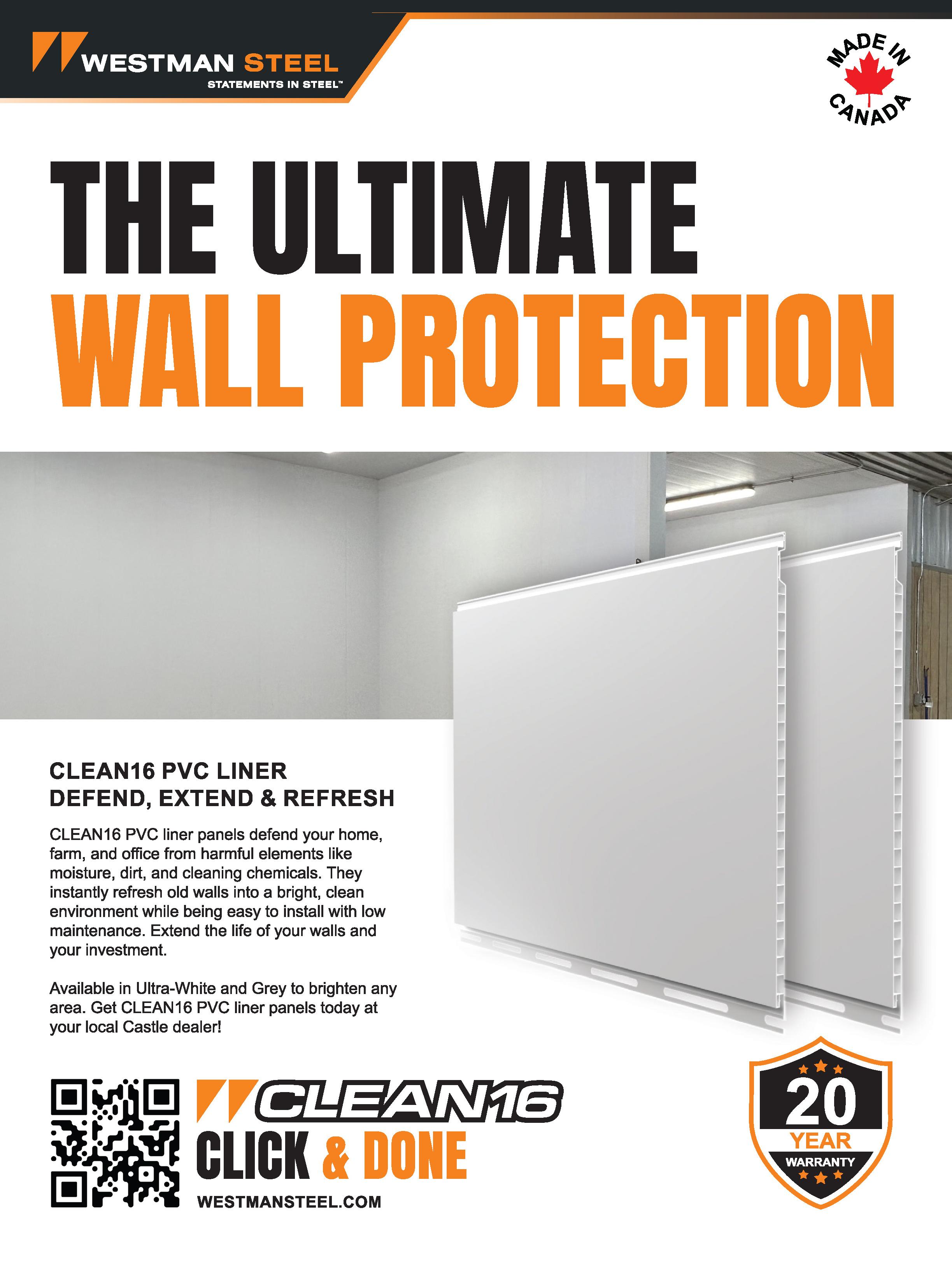
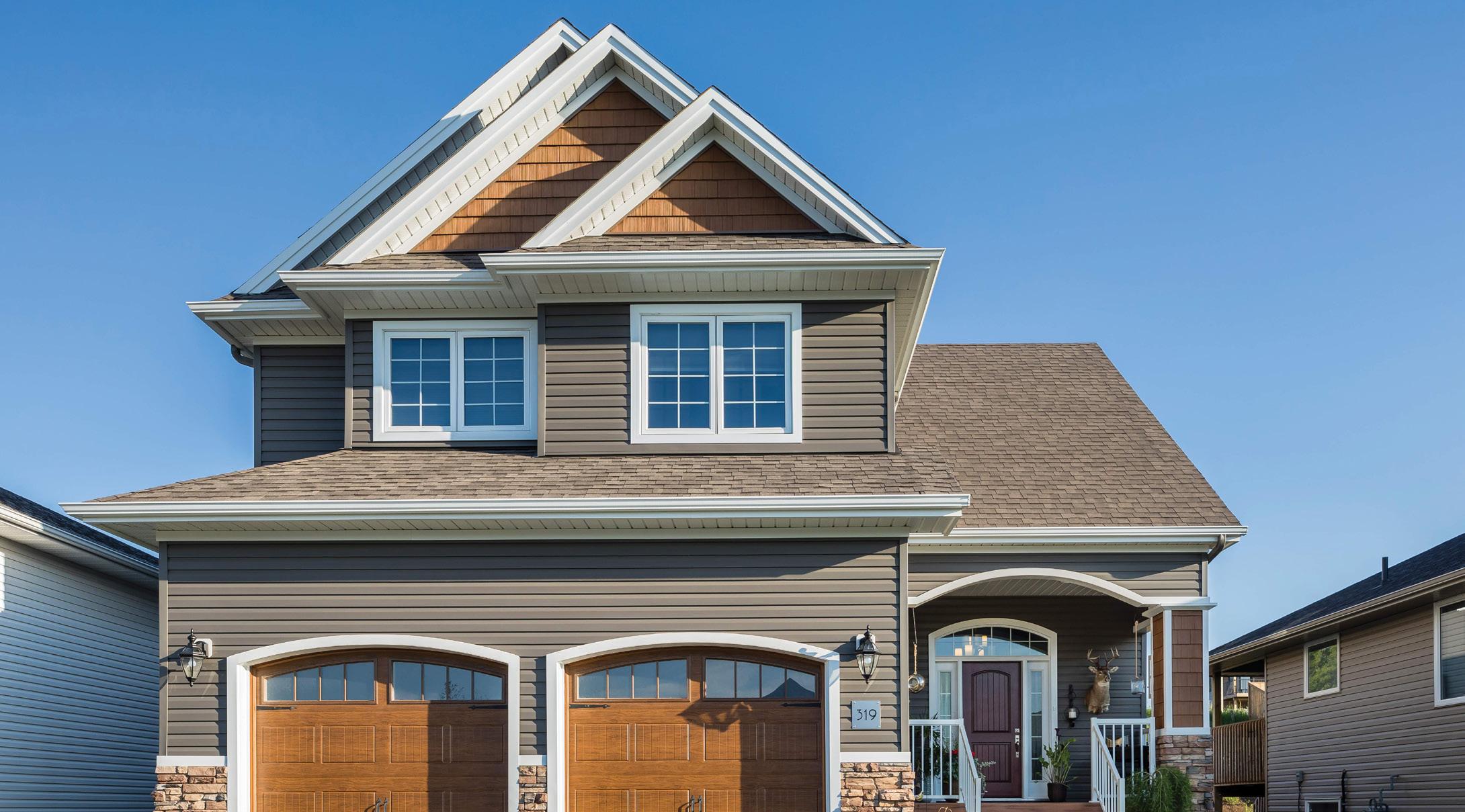
ROYAL BUILDING SOLUTIONS
Royal Building Solutions is a national distributor of exterior building products with 16 locations throughout Canada. Maurizio Scatozza, Regional Manager for Ontario, said the company distributes numerous exterior cladding products, including vinyl, PVC and aluminum siding.
“What has been popular for quite a while is our composite PVC product, Royal Celect,” said Scatozza, adding that its popularity is due to factors including its warranty, durability and resistance to water. Scatozza also noted a rise in the popularity of aluminum siding products with a woodgrain finish. He quickly pointed out that a product’s popularity in Canada is very regional –whereas Central Canada leans toward PVC and aluminum, vinyl products are still strong on the East and West Coasts.
Regional weather also plays a factor in a consumer’s decision-making process. On the East Coast, it is important to have a product that is impervious to water, like vinyl or PVC. “You are dealing with a lot more moisture content due to the rain and ocean factor.”
Dark colours, especially greys, are still trending in 2025 for Central and Western Canada, although
warmer brown tones are being reintroduced, especially out West, noted Scatozza. He feels the warm tones are tied to homeowners’ desire to connect with the surrounding nature when designing or remodeling their homes. However, he did point out that in the East, lighter colours are still going strong.
“The great thing about vinyl siding is that the colour tint is integrated into it during the vinyl production, so it’s in the body of the siding,” he said.
As for siding profiles, vertical board and batten has continued to catch consumer attention, with wider board widths leading the charge. Currently, Royal’s 11-inch board and batten profile is in greater demand than the eight-inch product. “I think it is touching on the historical and traditional look that is reminiscent of the board and batten from hundreds of years ago.”
Ultimately, homeowners do their homework when searching for a new siding product, said Scatozza, who feels a broad colour palette and extensive warranties are two major deciding factors when consumers choose exterior cladding.
Photo courtesy of Royal Building Solutions





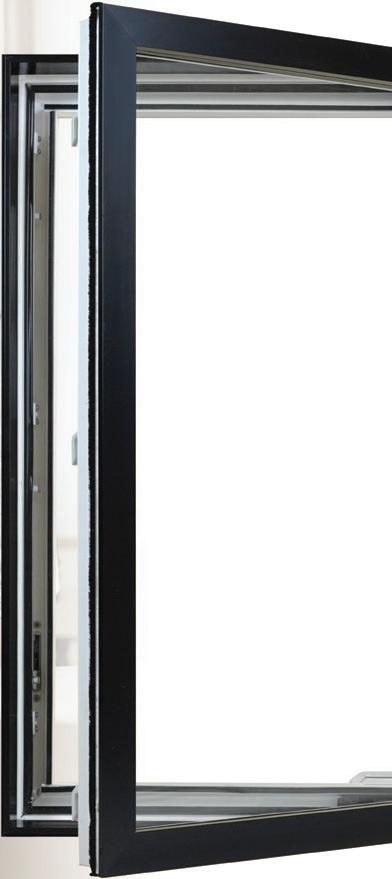



















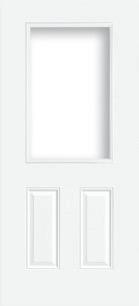








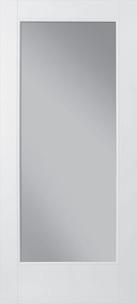



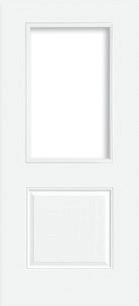

VICWEST
Founded in Victoriaville, Que., in 1930, Vicwest manufacturing and distribution has eight facilities across the country.
“In the roll form steel space, we are the only true coast-to-coast manufacturer in Canada,” said Brian Glen, Vicwest’s Director of Sales for Canada.
Vicwest’s Bellara siding, originally released as an architectural panel intended for use in institutional, commercial and industrial applications, is now a staple in the residential sector, noted Glen. With three sizes available in the plank series and numerous solid and woodgrain finish options, he feels “it has given architects and designers a chance to be more creative.”
Vertical application is trending in board and batten, but consumers may opt to combine more than one media. For example, they could use vertical plank alongside lap siding, allowing them to “wrap the entire house in steel,” said Glen. He added that consumers are also drawn to how well products perform and their ease of installation.
“With a 40-year warranty on our Bellara products and minimal maintenance, you rarely have to think about it.”
Glen says a woodgrain finish is definitely on trend, especially in feature pieces for the front of homes. In a plank look for the whole home it is picking up momentum, especially vertically-installed board and batten. As far as width of the plank goes, “that five and a quarter inch is still the top performer with 26-gauge being typical for residential application,” he remarked.
From an application standpoint, steel siding requires minimal tools and experience.
“It goes right to a hard deck or substrate, whether it be OSB or plywood.” He feels this appeals to consumers, while the ease of shipping and stocking, thanks to a set length-boxed program, appeals to retailers.
Glen said Vicwest is aligned with consumers when it comes to producing and sourcing sustainable building products. The company’s Planet Passionate initiative embodies that commitment. Company vehicles are now entirely electric, two plants make use of solar energy, LED lighting has replaced fluorescent, and rainwater is harvested for non-potable consumption. He said about 65 percent of the steel procured by Vicwest is recycled and at the end of its current useful lifetime, the product can be fully recycled again.


Photos courtesy of Vicwest
KAYCAN LTD.
Founded in 1974, Kaycan Ltd. has 30 distribution centres across Canada. As the company’s Vice President of Retail Sales in Canada, Wade O’Reilly has closely watched trends for the North American manufacturer and distributor of exterior building products.
There are colours and profiles to consider when discussing siding trends, O’Reilly explained. Colours are trending towards darker hues with black trim accessories; while in profiles, board and batten style vinyl siding is trending. Board and batten helped rejuvenate a lighter coloured home with darker trim, he said, but noted that in the last year or so, darker colours have gained popularity. “We are seeing darker reds, greens, blues, browns and greys.”
This year, Kaycan expanded its line of dark colours in board and batten. Colour depth is a personal choice and often it is defined by the territory, O’Reilly offered.
“The East Coast has always been more colourful, but it is catching on across the country, just not to the same extent.” In the accent market, black is dominating, he added.
O’Reilly has also noticed several types of cladding being used on a residential project. He says it is not uncommon to see sections of stone with
board and batten on the same home. Vinyl shakes are becoming more popular, too. He has also seen consumers, especially in B.C., using Kaycan’s Urbanix product, an aluminum accessory used for vertical or horizontal accents. The product comes in solid colours with darker colours trending, but woodgrain finishes are also an option.
Stone siding veneer is another product being used as an exterior accent, explained O’Reilly. “You have your areas on the exterior that are able to take stone; it’s mostly accents, there are not many full stone homes anymore.”
Another accessory category where O’Reilly has seen growth is restoration millworks. He says that category includes mostly vinyl trims and accessories that are used around features like windows and doors to enhance the curb appeal of a home. “The restoration millworks category has been growing tremendously; it’s huge right now.”
Vinyl leads the way in siding and has been the traditional choice for most Kaycan-supplied homes, with its aluminum product mostly used for accents like soffits, fascia and gutters. O’Reily also sees aluminum used in verticals, typically higher up on a gable end.
Looking ahead, he tagged a possible interesting development in the siding industry.
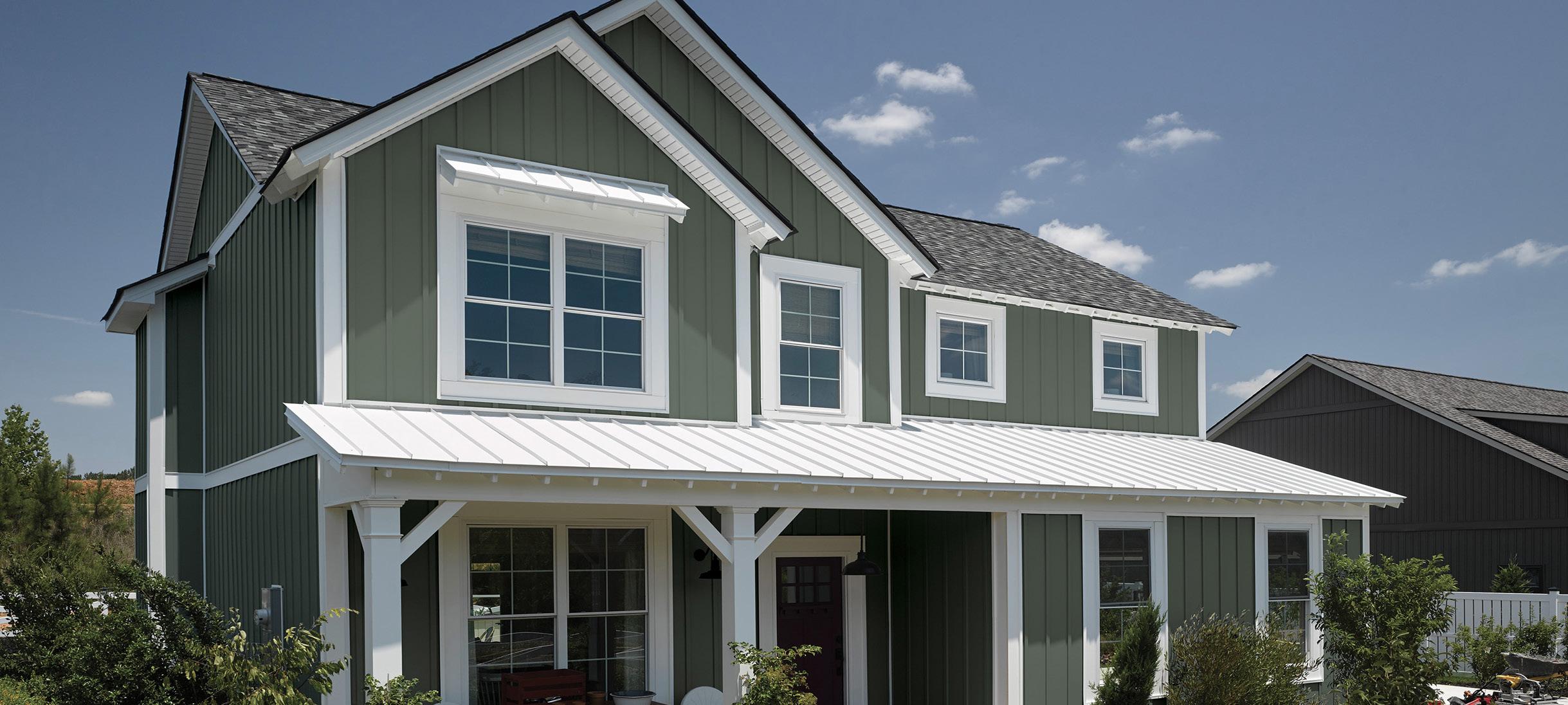
Photo courtesy of Kaycan Ltd.
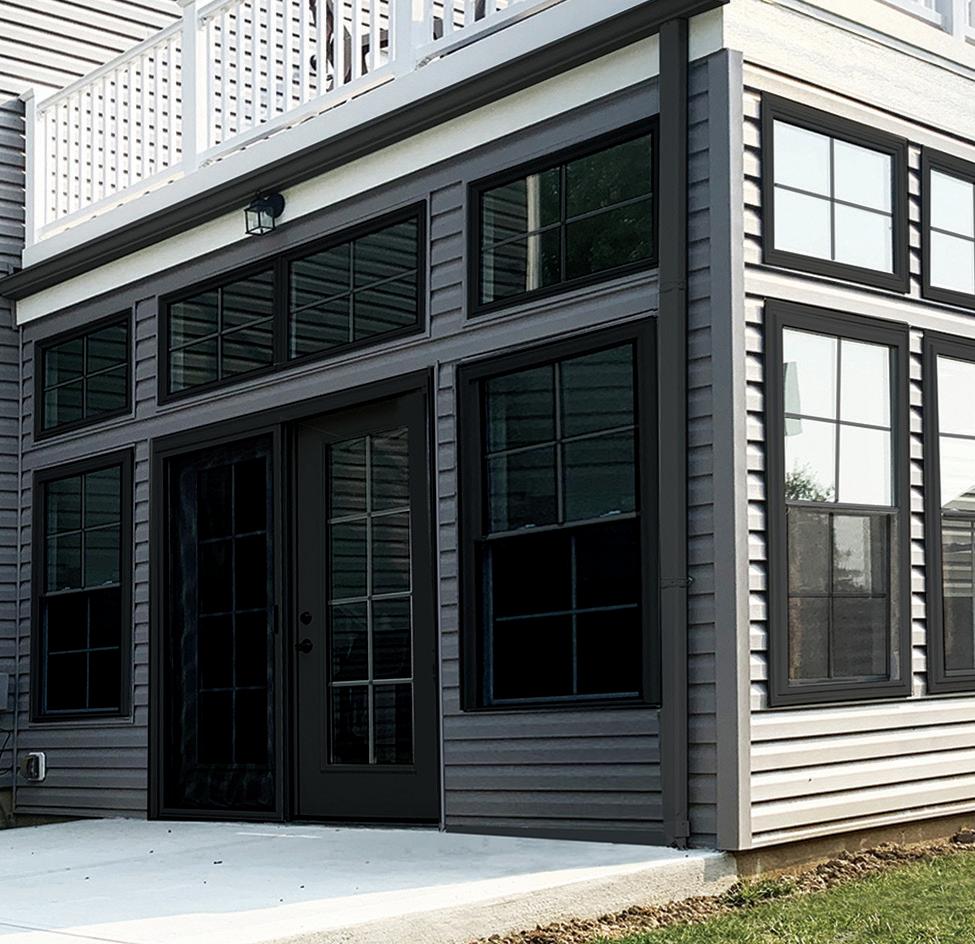
“We are the first company to manufacture a solid black vinyl extrusion window,” he shared.
O’Reilly said that black manufactured windows are typically painted black – but if they are scratched, the white underneath can show through. O’Reilly feels this new technology is a game changer; he sees it being adapted for use in restoration millwork and also for vinyl siding.
“In vinyl siding, there is not much in black. Now, we have the ability to do a black vinyl siding that we can warrant – it is something I can see coming in the near future.”
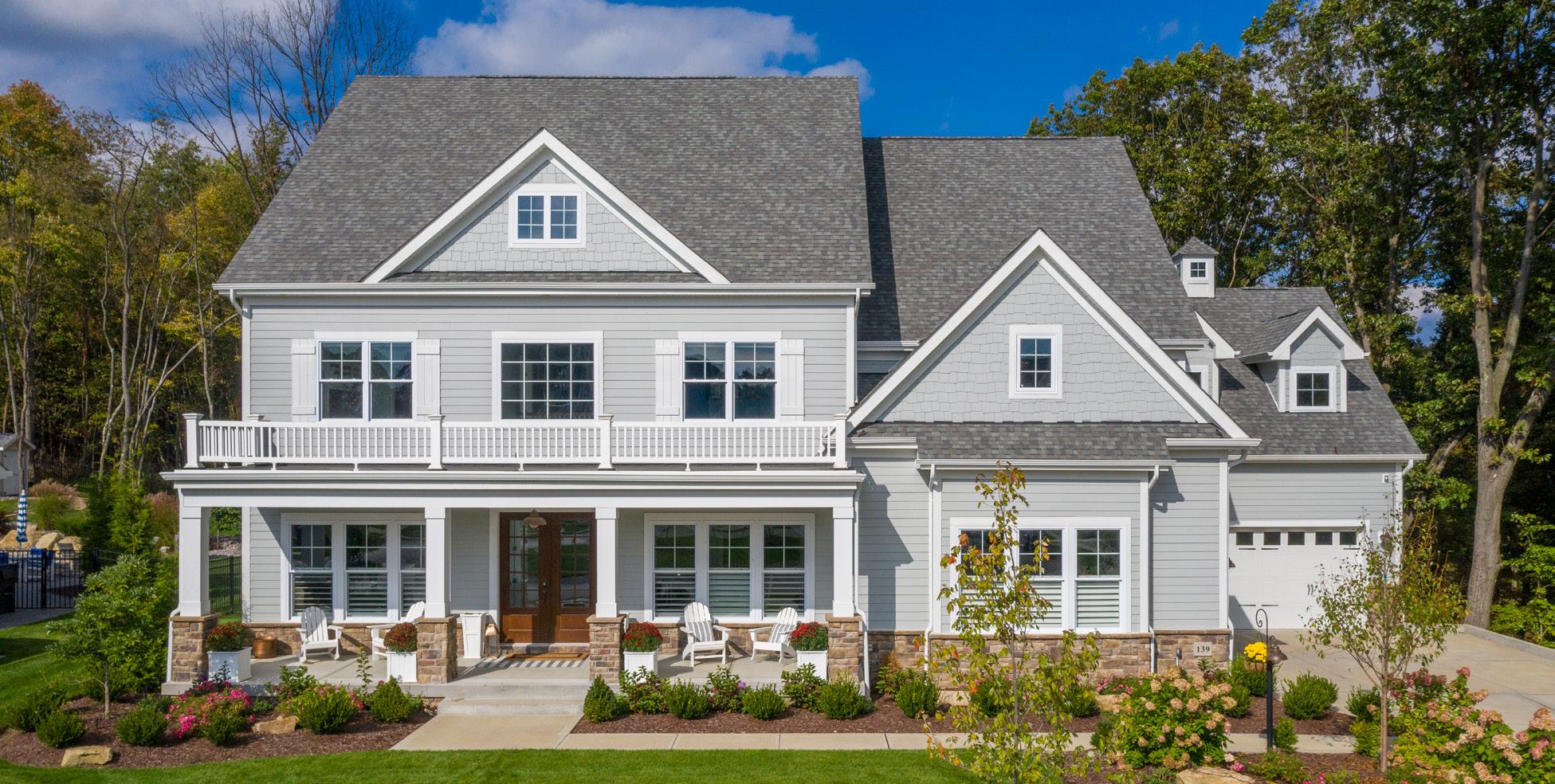
JAMES HARDIE
“James Hardie is a global leader in the manufacture of fibre cement products,” says Matt Logan, the company’s Director of Product Management. With over 130 years of experience, James Hardie provides residential and light commercial building materials to suppliers in North America, Australia, and several other international markets.
Logan sees several notable trends in the exterior siding market. There is a growing preference for mixed material exteriors, he said, noting that homeowners are combining fibre cement siding with other materials, mainly brick stucco or stone. James Hardie has developed two new products,
available in April 2025, to satisfy this trend: Hardie architectural panel and architectural metal trim.
Logan said they are systems that offer a contemporary design solution. “The panels offer nature-inspired, non-wood look textures that elevate the traditional look of stucco.”
These new products will add to Hardie’s lineup, which already consists of Plank Lap siding, Artisan siding, shingle siding and panel vertical siding. With homeowners increasingly researching products themselves and sussing out numerous options, Logan pointed to James Hardie’s “various textures and finishes” as appealing to those who are looking to customize a home’s exterior.
Photo courtesy of Kaycan Ltd.
Photo courtesy of Doman Building Materials
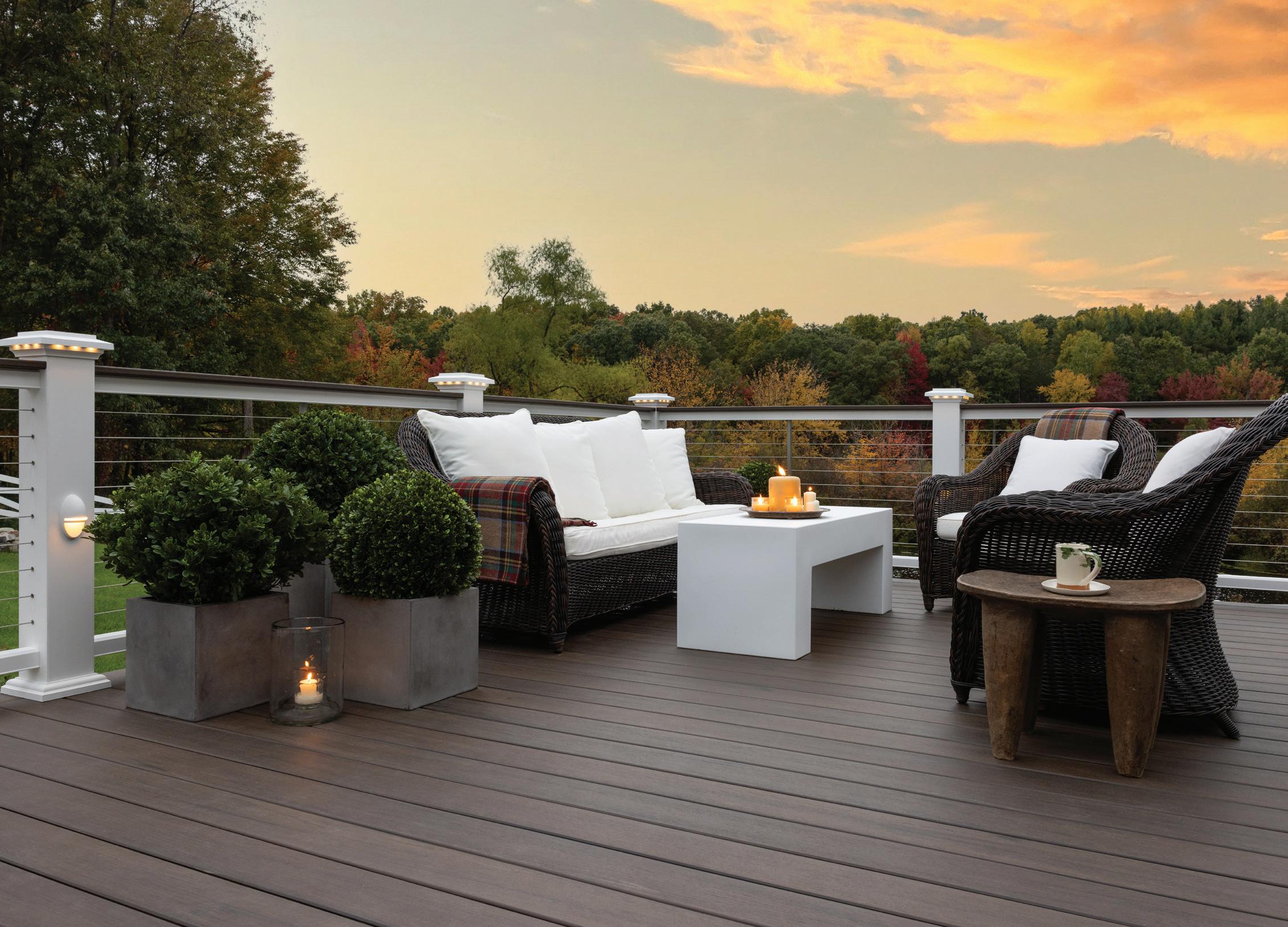
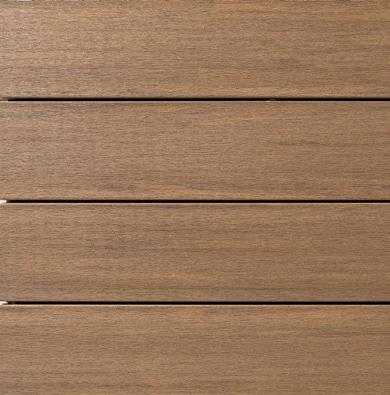
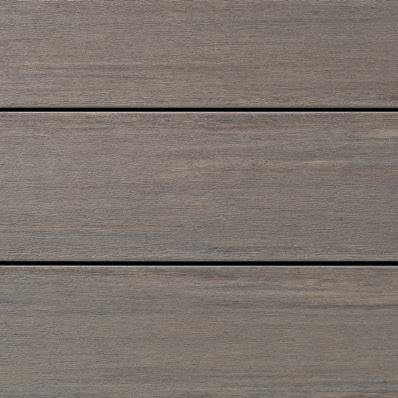
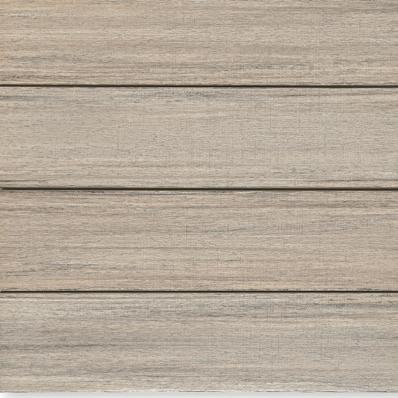



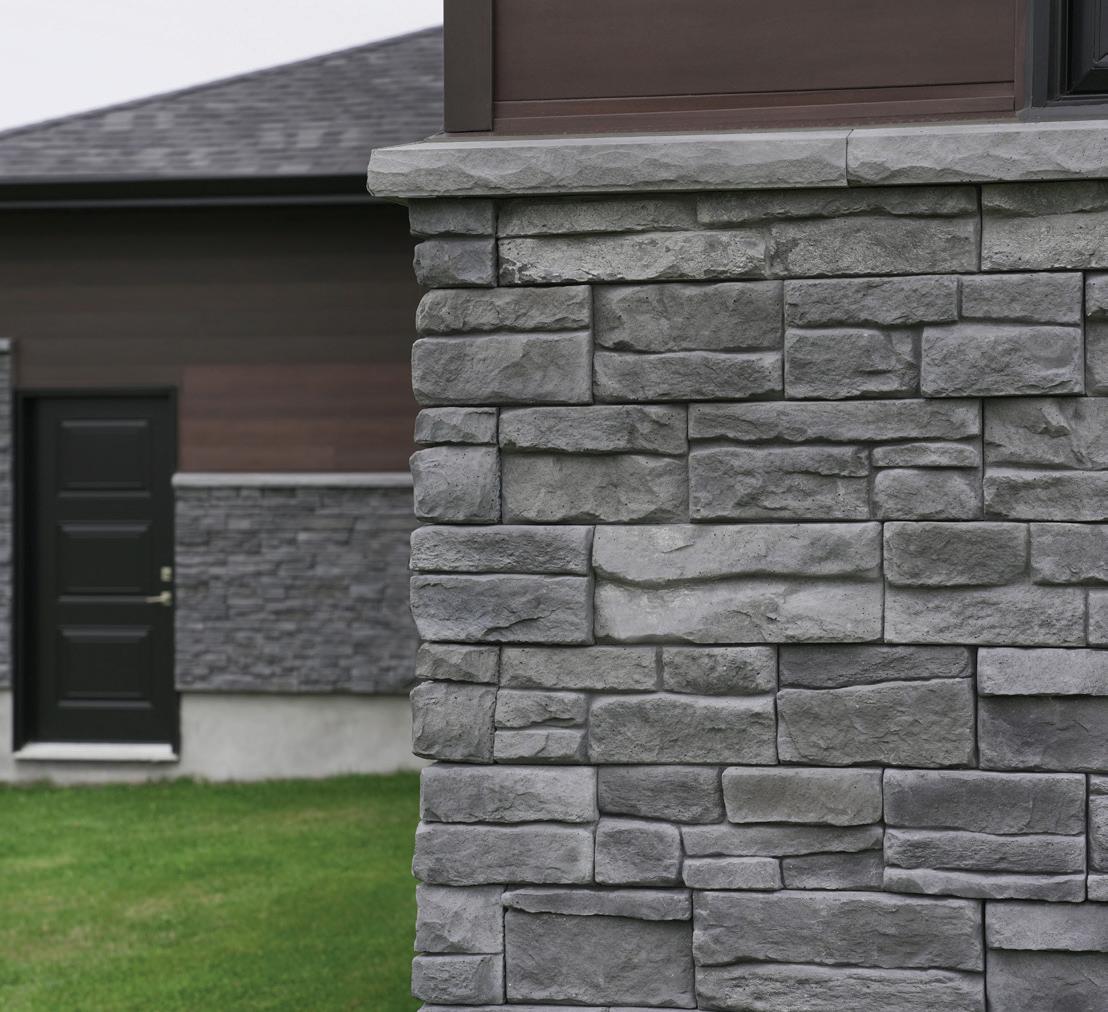



He said fibre cement siding continues to grow market share, partly due to its durability and versatility. The product’s other qualities are also resonating with homeowners, including its “superior performance in the face of weather damage, wildfire risk, and pest infestation.”
Logan feels consumers are searching for products that offer enhanced durability and environmental benefits. He contended that vinyl siding is popular in certain regions, but for those looking for the above-mentioned qualities, “fibre cement stands out as the preferred choice.” He added that composite and metal siding are gaining traction, but projects that fibre cement’s performance and visual appeal will continue to lead the way.
As climate concerns grow across the country, Logan reported a heightened demand for non-combustible products that offer greater protection for homes in wildfire risk zones. He noted that these products are increasingly being integrated into home building and home renovation plans.
“Fibre cement siding is non-combustible, which is a growing priority for consumers, particularly in areas prone to wildfires,” he concluded.
CORNERSTONE BUILDING BRANDS
Mitten and MAC Metal Architectural provide a diverse range of exterior siding solutions, according to Kim Willins, Director Retail Sales & Distribution for Cornerstone Building Brands.
Mitten, founded in 1959, is a Canadian manufacturer and distributor of vinyl and exterior building products. More recently, Cornerstone Building Brands acquired MAC Metal Architectural in 2023, a Quebec-based manufacturer that supplies pre-painted steel siding and roofing products.
“We are North America’s largest manufacturer of exterior building products,” said Willins.
Mitten vinyl siding continues to be a top seller. Willins related the popularity of their vinyl product to its durability, low maintenance and cost-effective value. Add to that a broad selection of profiles and the “largest colour palette in the industry,” and the West Ridge™, Sentry™ and Oregon Pride™ collections remain popular.
Willins said steel siding appeals to those looking for a more luxurious, modern appearance with exceptional durability. MAC Metal Architectural’s Harrywood Plus, Board & Batten and PolyMac are leading the way for Cornerstone in the Canadian steel siding market.
Board and batten is trending as homeowners continue to embrace modern farmhouse and contemporary architectural styes. Willins said Mitten’s eight-inch vinyl plank is a unique offering in the vinyl market for its profile and ability to be installed flat against a wall. “It can be installed horizontally, vertically and as a porch ceiling.”
Photos courtesy of Mitten
Vertical siding applications are surging in popularity, although horizontal siding remains the standard, observed Willins. Dutchlap and Clapboard are widely used in new build homes and renovation projects. Mixed materials and textures are also increasing in popularity, Willins added.
“Homeowners are blending vinyl, metal, stone and woodgrain finishes to create visually dynamic exteriors.”
No matter the style of siding application, dark and bold colours are trending. She sees market popularity in shades of dark blue and grey. Woodgrain finishes are also high in demand, where rustic tones mixed with dark bold colours can create a modern, but warm, aesthetic.
Vinyl siding continues to be the most widely used material in Canada, but metal is on the rise,
particularly in high-end and modern home designs, Willins commented. Advances in fade-resistant technology, impact resistance, and rigidity continue to make vinyl a strong choice, whereas steel is lauded for its unmatched durability and an elevated aesthetic appeal.
“Matte and textured finishes are increasingly preferred over high-gloss options, as they enhance the depth and realism of woodgrain metal siding,” she said.
Durability and long-term value remain top priorities as buyers are increasingly looking for locally-made, Canadian-manufactured products. Homeowners are also seeking eco-friendly options.
“Sustainability is a key factor driving purchasing decisions,” concluded Willins.
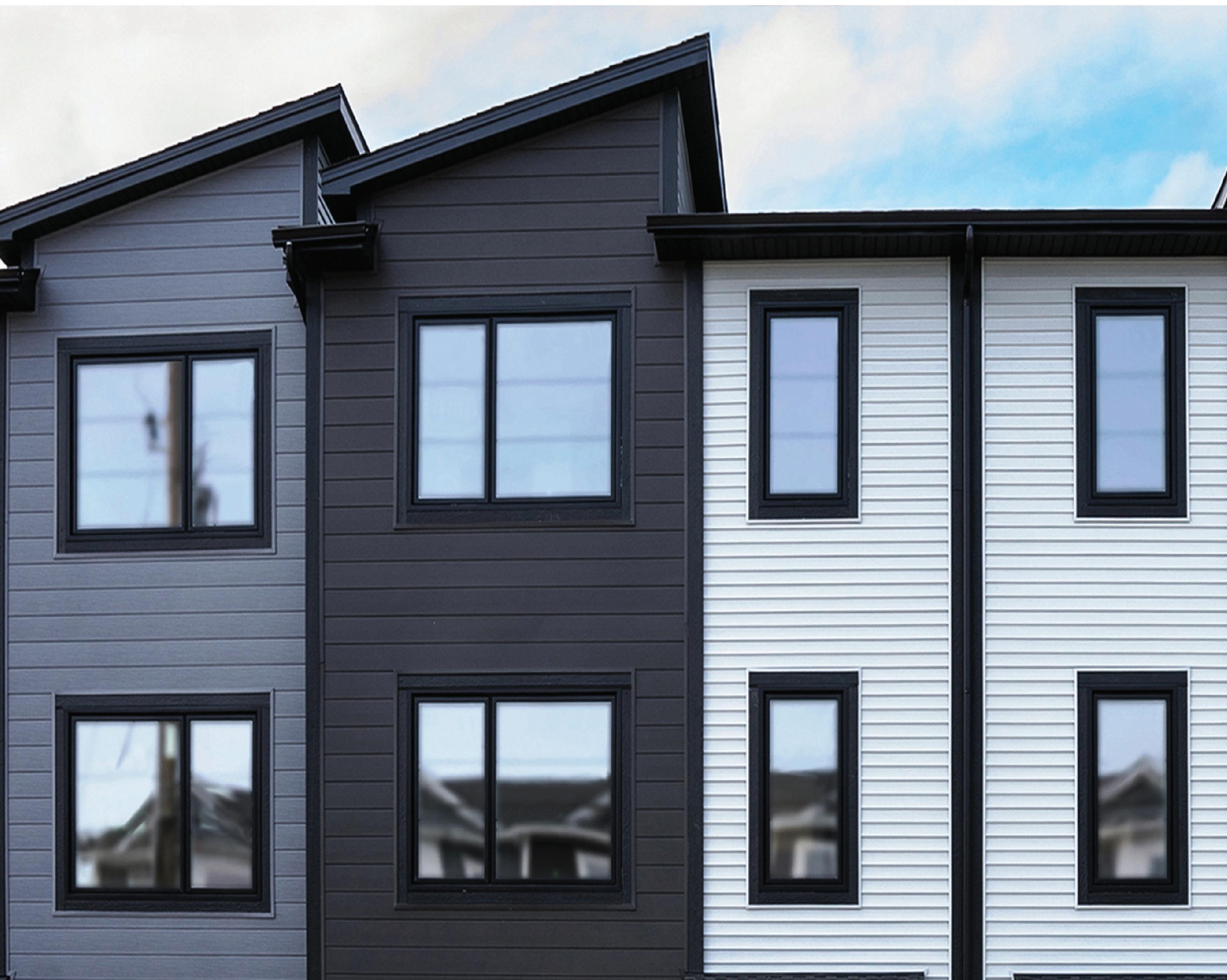

GENTEK CANADA
With over 50 years of manufacturing expertise, Gentek offers an extensive range of products, including vinyl, aluminum and steel siding, soffit systems, trim accessories, and residential and light commercial windows. With a coast-to-coast reach, Gentek operates three manufacturing facilities in Canada, as well as 22 supply centres for residential and commercial building solutions.
“Proudly supporting the Made in Canada campaign, Gentek is committed to Canadian craftsmanship,” said Philippe Bourbonniere, President of Gentek Canada Building Supplies.
Homeowners have become increasingly focused on three aspects when choosing a siding product, according to Bourbonniere. Sustainability, energy efficiency and aesthetic variety are top of mind as consumers seek long-term value with low maintenance.
“It’s clear that consumer demand is evolving toward more customizable, sustainable and energy-efficient siding options.”
Home design is playing a key role as homeowners comb through siding design styles. “One of the most noticeable trends is a growing preference for board and batten vertical siding,” Bourbonniere stated. Vertical siding offers a more contemporary and sleeker look that’s becoming increasingly popular, especially for modern-style homes. However, horizontal siding remains a staple, especially for more traditional and classic home designs.

Photos courtesy of Gentek
WINDOWS AND SIDING BUILT WITH PRIDE IN CANADA

For more than a half century, Gentek has served the Canadian building industry with innovation, dedication and pride in our Canadian-made products.
SIDING
• Vinyl siding for every project and price point
• Vinyl soffit in a variety of architectural profiles
REPLACEMENT WINDOWS
• Regency® 400 Series Custom Vinyl Windows
• Regency® High-Performance Vinyl Windows gentek.ca Make
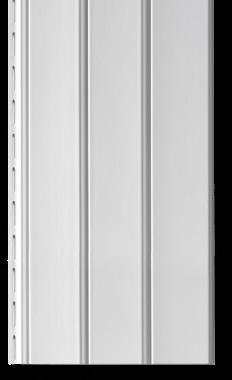
Inspired quality, trusted leadership – all backed by Gentek’s world-class customer service and extensive resources. See what Gentek can do for you. Explore more at gentek.ca



Vinyl siding is still the preferred choice for a majority of homeowners, due to its timeless appeal and versatility. Bourbonniere has noticed a “shift toward larger, bolder profiles in horizontal siding,” like Gentek’s seven-inch Align Composite Cladding plank. He feels the wider design suits homeowners desiring a more updated, robust appearance while still maintaining that familiar, classic feel.
In addition to style preferences, homeowners are also placing more emphasis on energy-efficient options. There is a growing desire for homes that are both smart and efficient, noted Bourbonniere. For those consumers, he offered insulated vinyl siding as a solution to enhance the home’s thermal performance, while helping to reduce energy costs and increase comfort. “This is particularly important in colder regions of Canada, where energy efficiency is a priority.”
Bourbonniere indicated an increasing shift toward wood alternatives in the siding realm. He said that although natural wood siding is still appreciated for its warmth and beauty, wood alternatives provide the look of wood with greater durability and less maintenance, which is appealing to the modern consumer. This category would include composite and engineered wood products, such as fibre cement and vinyl-clad wood, he indicated. “They combine aesthetics with performance, while
being a more cost-effective and low-maintenance alternative to traditional wood siding.”
Customization is another key factor, Bourbonniere stated. Homeowners want siding that reflects their personal style, with a wide variety of colours, textures and finishes. On top of that, consumers are becoming more and more educated about the long-term value of the products they choose. Sustainability – in terms of energy efficiency and the materials used in construction – is now at the forefront of many decisions, he remarked.
“Consumers are increasingly conscious of the environmental impact of the products they purchase, and they’re looking for solutions that offer both beauty and responsibility.”
CONCLUSION
For 2025, wider and bolder is trending. Whether it’s a vertical or horizontal siding application, consumers are looking for a modern twist to even the most contemporary design.
Homeowners want increased curb appeal and a customized appearance, while having an eye on sustainability. Although regional preferences exist, dark colours remain the top choice in siding, with woodgrain finishes starting to appeal to those searching for a warm, naturally inspired finish that connects with the surrounding environment. —

Photo courtesy of Royal Building Products
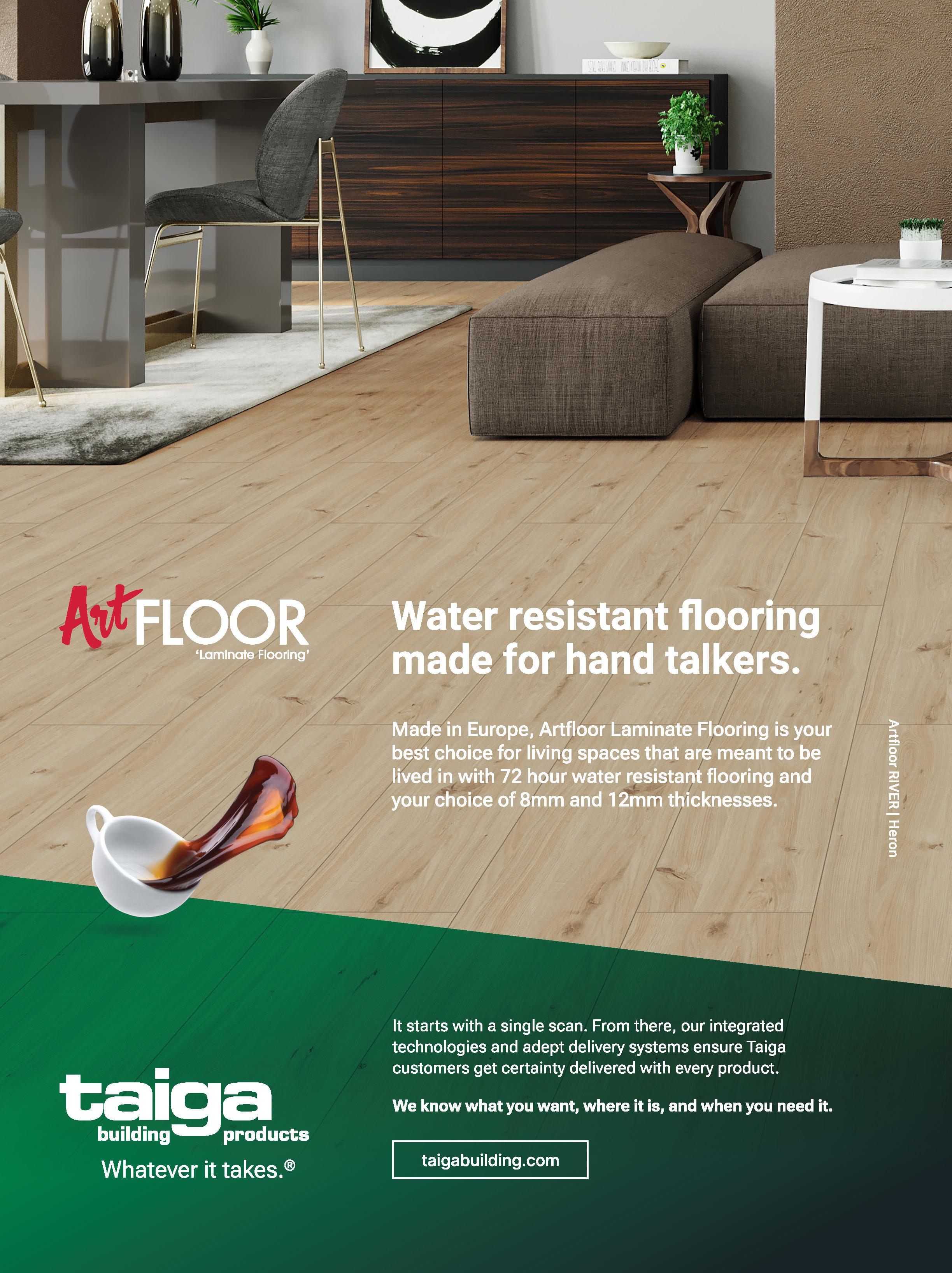

DROWNING IN THE DETAILS? SEVEN STEPS TO OVERCOMING THE URGE TO MICROMANAGE
Written by Kate Zabriskie
It starts innocently enough. You want to ensure everything runs smoothly, so you check in often. You spot a typo in a presentation, so you fix it yourself. Someone misses a minor detail, and you think, “I’ll just handle it next time.” Before long, you’re reviewing every email, sitting in on every meeting, and wondering why your team can’t seem to get anything done without you.
Most people don’t set out to micromanage—it often comes from a desire to help, avoid mistakes,
or ensure high standards. But the unintended consequences are real: a demotivated team, slower progress, and burned-out leaders. If this sounds familiar, don’t worry. Awareness is the first step, and change is possible.
Let’s dive into some questions to see if micromanagement might be sneaking into your leadership style, and explore actionable tips to break the habit.
ARE YOU MICROMANAGING? ASK YOURSELF THESE QUESTIONS
1. DO YOU NEED TO APPROVE EVERY DECISION?
If team members check with you for even the smallest choices—like the wording of an email or the layout of a slide—you may be micromanaging. This constant need to be involved in decisions can signal a lack of trust in their abilities.
2. DO YOU FREQUENTLY REDO YOUR TEAM’S WORK?
If reports, presentations, or deliverables never seem “good enough,” and you often tweak or redo them, you’re sending the message that your way is the only way. This discourages initiative and autonomy.
3. DO YOU HOVER OVER TASKS YOU’VE DELEGATED?
Delegation means handing over responsibility, but if you’re constantly checking progress, asking for updates, or stepping in to “help,” your team isn’t getting the space to own their work.
4. DO YOU RARELY FEEL SATISFIED WITH RESULTS?
If you’re often frustrated with outcomes, it might not be the quality of the work—it could be unrealistic expectations or difficulty accepting different approaches.
5. DO YOUR TEAM MEMBERS AVOID TAKING INITIATIVE?
If your team hesitates to make decisions or waits for explicit instructions before acting, it could be a sign they’ve learned to rely on you to avoid being second-guessed.
THE HIDDEN COSTS OF MICROMANAGEMENT
Micromanaging doesn’t just make daily work harder—it has long-term consequences for teams and organizations:
• It Hinders Growth: When managers control every detail, team members miss opportunities to learn, solve problems, and take ownership.
• It Pushes Good People Away: Talented employees want to feel trusted and valued. If micromanagement makes them feel powerless or underappreciated, they’ll start looking for opportunities elsewhere.
• It Erodes Team Morale: A micromanaged team often feels disempowered and disengaged, which can lead to frustration, resentment, and lower productivity.
• It Limits Managerial Effectiveness: Micromanagers spend so much time on small details that they can’t focus on big-picture strategy or leadership priorities.

BREAKING THE CYCLE: HOW TO STOP MICROMANAGING
1. STEP BACK AND TRUST YOUR TEAM
Trust is the foundation of effective leadership. Start by giving your team clear goals and responsibilities, then step back and let them execute.
Instead of “Send me the draft before you finalize it,” try “Finalize the draft and send me a copy once it’s submitted.” This shows confidence in their abilities.
2. FOCUS ON OUTCOMES, NOT PROCESSES
Micromanagers often fixate on how tasks are done. Shift your focus to the desired results and let your team figure out the best way to achieve them.
Instead of prescribing every step for a report, say, “The goal is to highlight trends and actionable insights. Use the format you think works best.”
3. SET CLEAR EXPECTATIONS
Ambiguity can lead to over management. Clearly define what success looks like for each task or project.
Use a shared checklist or document to outline deliverables, deadlines, and key milestones. This ensures alignment without constant oversight.
4. ENCOURAGE INITIATIVE AND AUTONOMY
Build confidence by allowing your team to make decisions and solve problems independently. If mistakes happen, treat them as learning opportunities.
Say, “I trust your judgment—let me know how it goes,” instead of stepping in immediately with your solution.
5. SCHEDULE REGULAR CHECK-INS INSTEAD OF CONSTANT MONITORING
Replace impromptu check-ins with scheduled updates. This gives your team uninterrupted time to work while keeping you informed.
Instead of asking for daily updates, hold a weekly meeting to review progress and address challenges.
6. REFRAME YOUR ROLE AS A LEADER
Great leaders focus on enabling their team’s success, not doing the work for them. Shift your mindset from “How do I control this?” to “How do I support my team’s growth?”
Ask yourself, “Am I helping my team develop, or am I doing their job for them?”
7. INVITE HONEST FEEDBACK ABOUT YOUR STYLE
Your team’s perspective can reveal blind spots. Create a safe environment where they can share how your management style affects them.
Ask, “How can I give you more space to work independently?” and be open to their suggestions.
CHANGE YOUR FOCUS
Micromanagement often stems from good intentions, but its impact can be deeply damaging. By reflecting on your habits, focusing on outcomes, and empowering your team, you can break the cycle and build a more engaged, productive workforce.
Leadership isn’t about controlling every detail— it’s about fostering trust, encouraging growth, and creating an environment where everyone can thrive. If you let go of the reins, you might be surprised at just how far your team can go. —



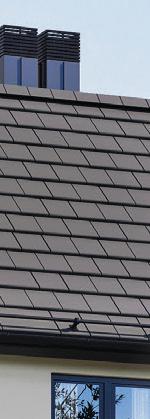














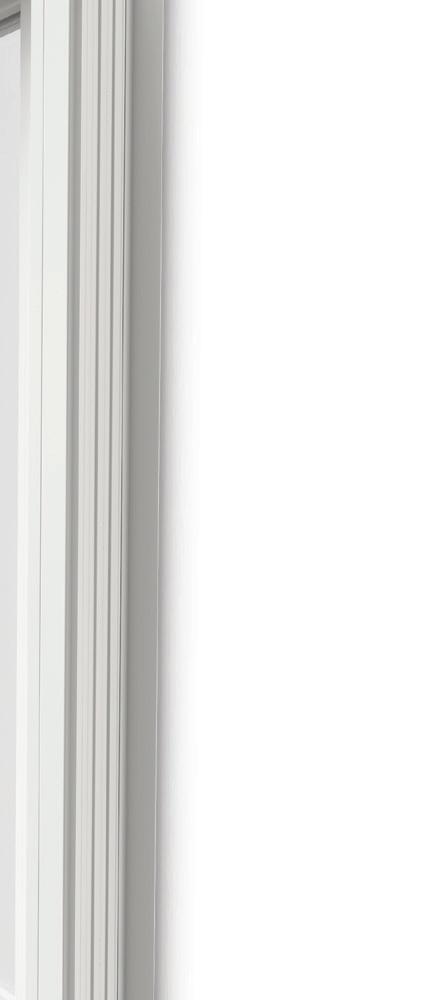




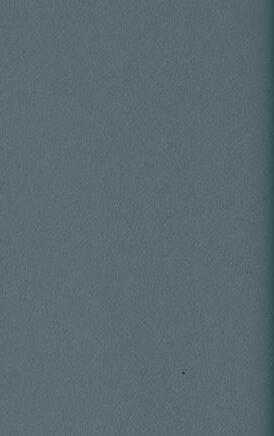
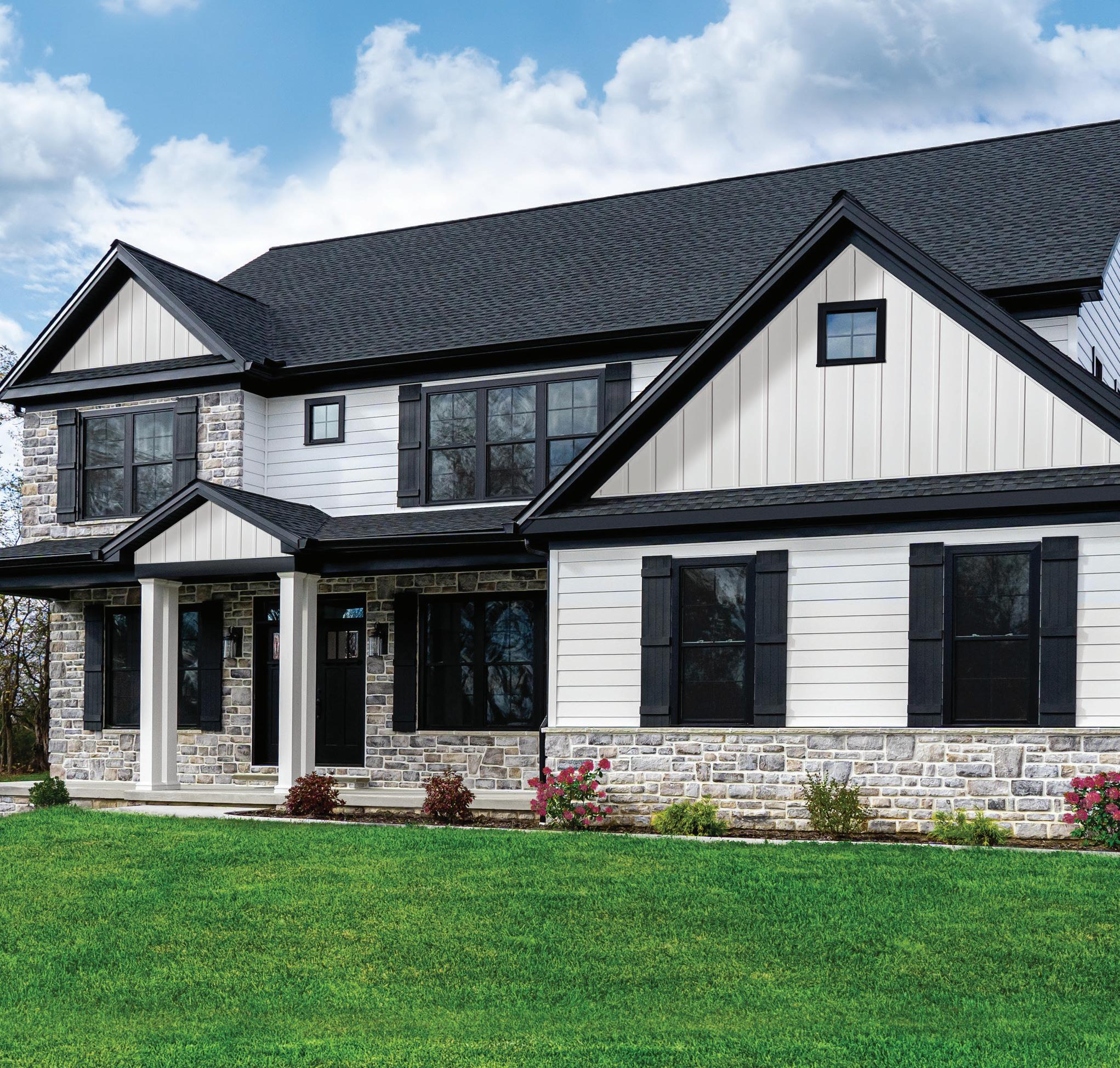












ROOFING MANUFACTURERS
PREDICT A STRONGER 2025
Written by Lawrence Cummer
Photo courtesy of Vicwest

The roofing category has experienced a dip over the last few years, but things are looking up for contractors this year, according to leading Canadian roofing vendors.
Low interest rates and their impact on mortgages have translated into a boom for construction and renovation, and roofing is no exception. “In 2025, the construction industry is expected to grow. At GAF, we also anticipate seeing this growth across our business this year and expect contractors to see continued demand,” says James Cito, Senior Director of Residential Shingle Marketing at GAF.

Homeowners across Canada are placing greater emphasis on performance, energy efficiency, and aesthetics while evolving insurance requirements and sustainability standards are shaping purchasing decisions, says Rob Davidson, Vice-President of Residential Sales for Canada at IKO. “Roofing systems, including essentials like shingles, ice and water protection, and underlayment will always remain in demand as homeowners and builders seek reliable, high-performing solutions.”’
He says this has prompted IKO to introduce advanced roofing systems designed to meet modern needs, comply with stricter regulations and handle the changing environment. “The
Canadian roofing industry is moving fast, and we’re ensuring contractors have the tools, products, and support they need to stay ahead and succeed.”
A POSITIVE BUT TENTATIVE MARKET
While some predict significant growth in some areas of the roofing space, others are expecting more modest improvement overall over last year.
Bernard Nadeau, Vice-President of Sales & Marketing at Saint-Gobain, parent to Building Products of Canada and CertainTeed roofing products, expects positive but moderate growth in 2025. “The market should show slight growth compared with last year.”
Photo courtesy of GAF
Photo courtesy of IKO Canada
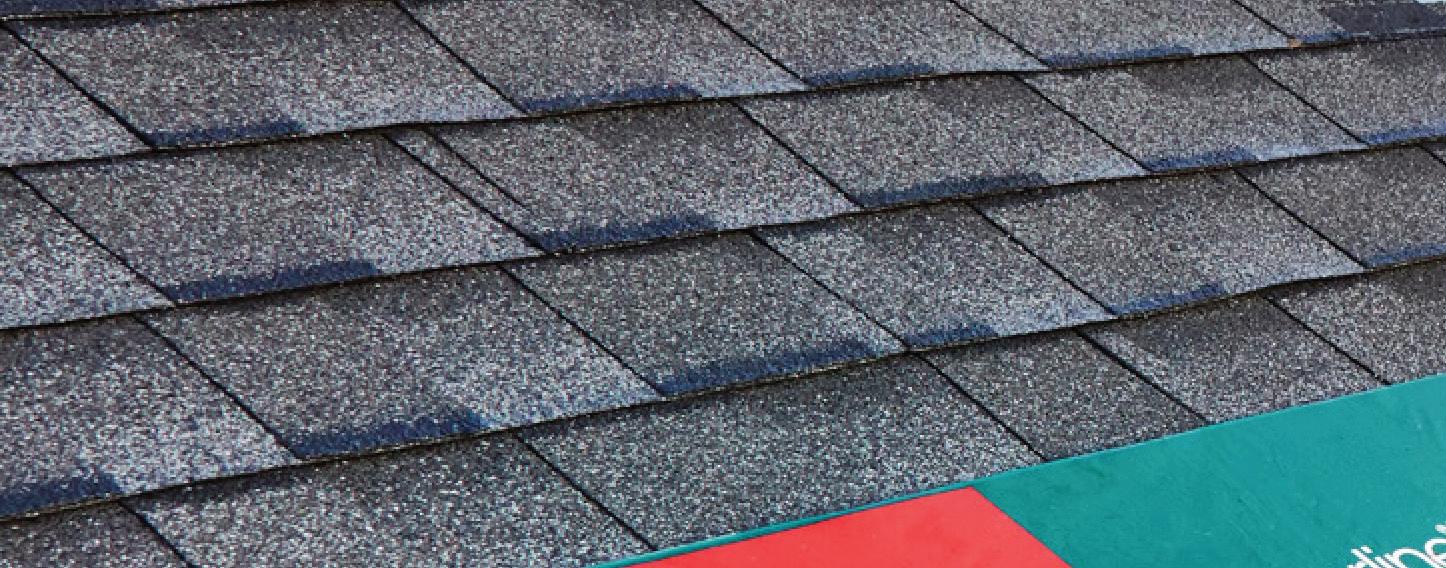
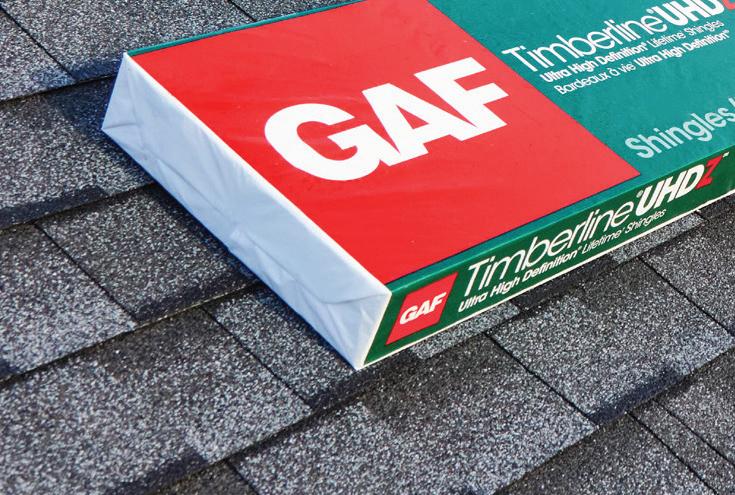

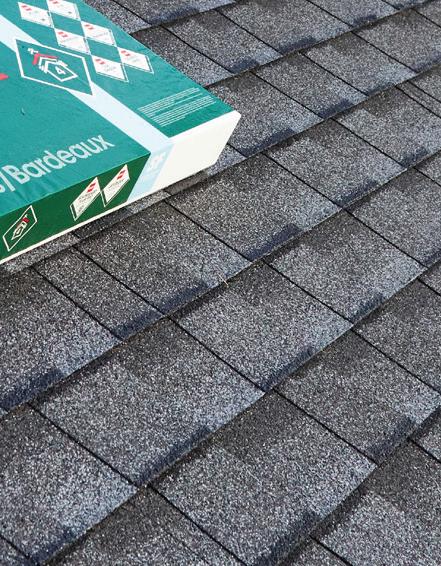


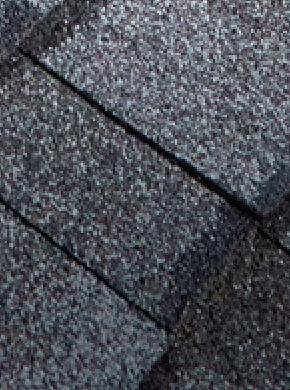

He adds that despite the positive impact on construction and renovation of lower interest rates there are still many unknown factors, like tariffs, that provoke caution.
Greg Gardenits, National Director of Sales & Marketing of Westman Steel Industries, is more
optimistic: “As we move into 2025, the roofing industry remains robust, driven by a mix of residential, agricultural, and commercial projects,” he says. “Demand is expected to stay strong as new builds and renovations continue, especially in rural and suburban markets where steel roofing has seen significant adoption.”
Photo courtesy of Westman Steel Industries
THE ULTIMATE WALL ORGANIZATION

CLEAN16 PVC SLATWALL FUNCTION MEETS STYLE
CLEAN16 Slatwall PVC panels transform your home, garage, or workspace with durable, moisture-resistant storage solutions. Designed for easy installation and low maintenance, CLEAN16 Slatwall turns any wall into a functional storage space.
Available in Ultra-White and Grey to enhance any area. Get CLEAN16 Slatwall PVC panels today at your local Castle dealer!

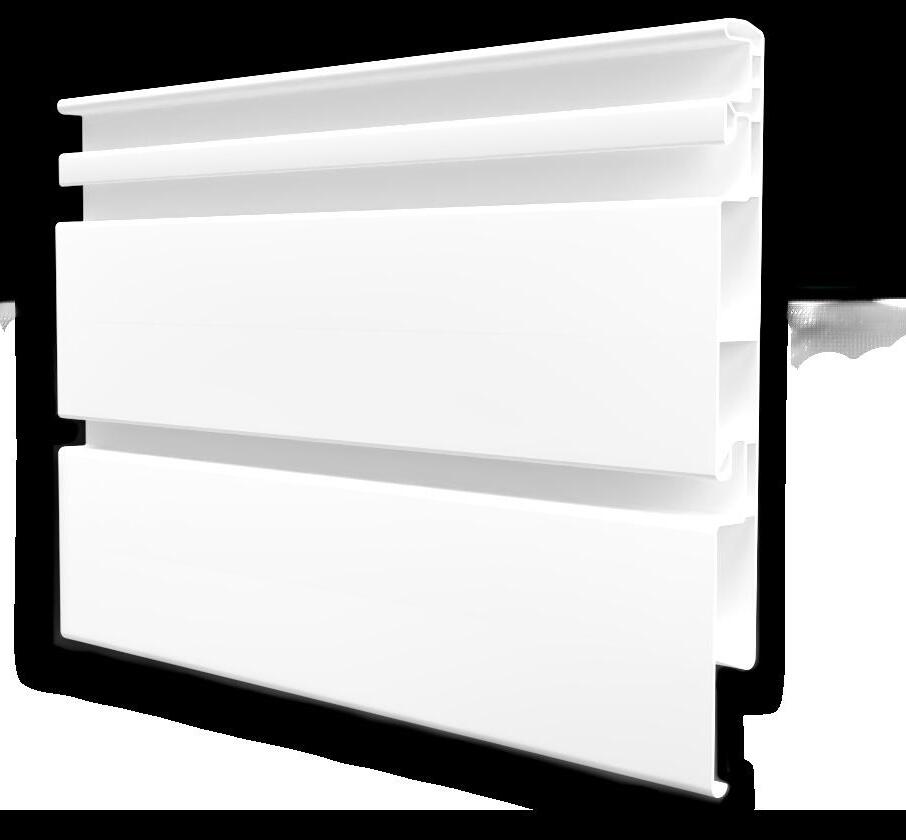



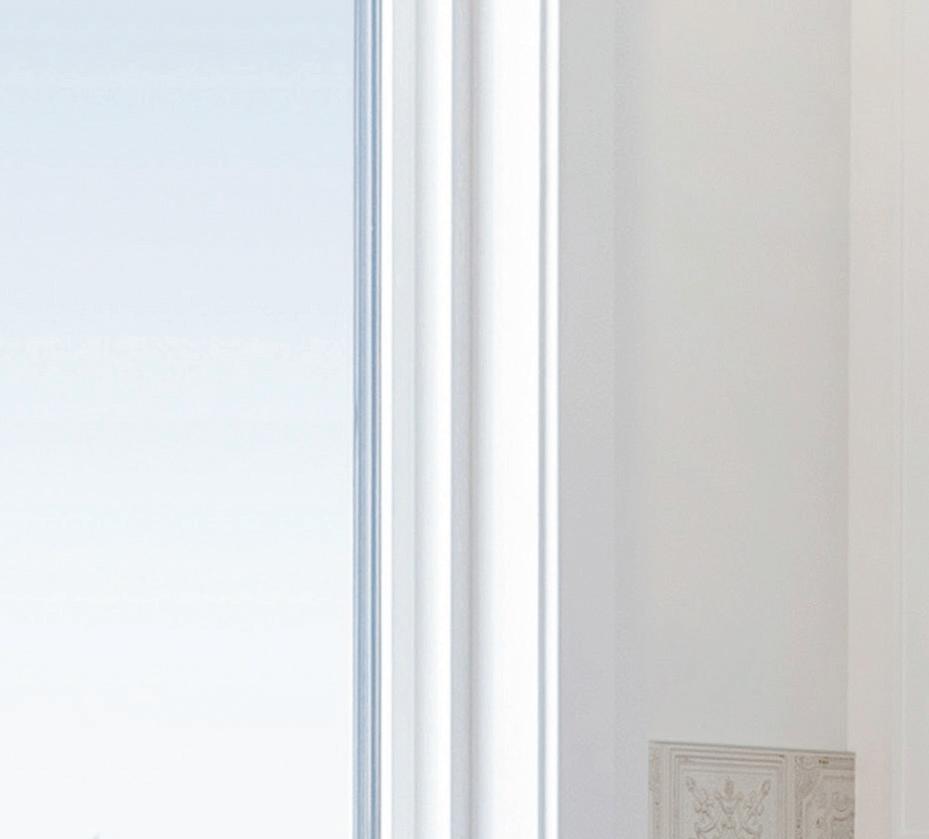



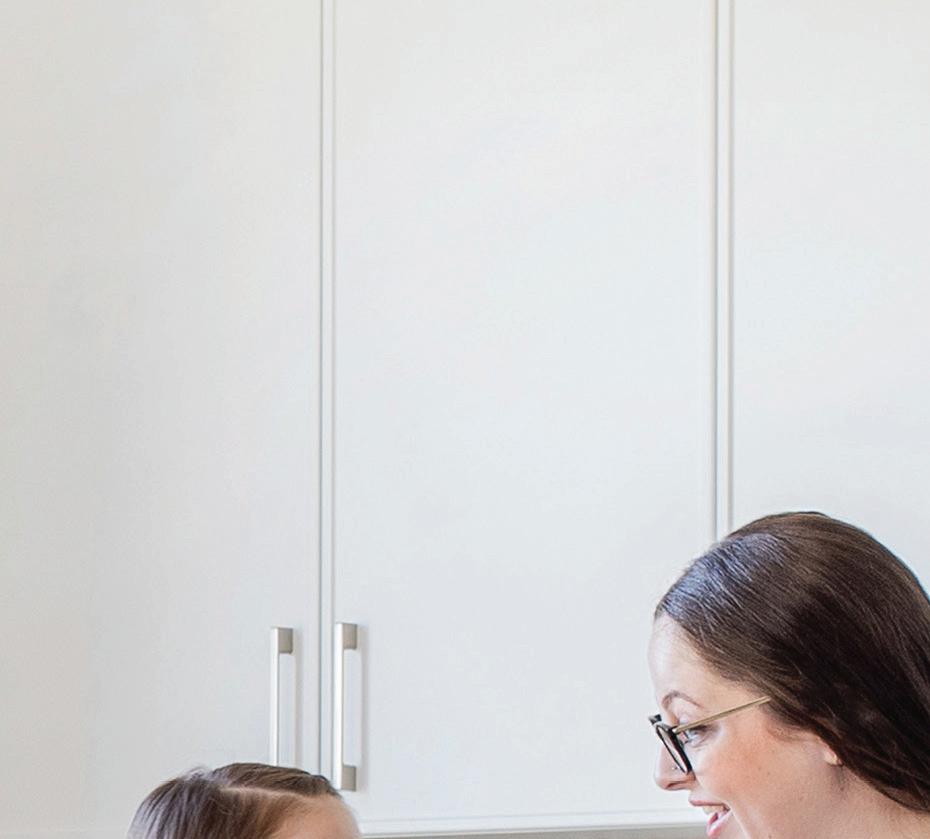


STEEL ROOFING CONTINUES ITS RISE
Metal roofing is increasingly popular for several reasons and saw growth even during more economically conservative times, according to several roofing suppliers.
“The traditional roofing category experienced double-digit declines in sales last year; however, metal roofing experienced growth in an economy where interest rates were quite high,” says Randal Rocchio, Sales Manager, Ideal Roofing.
Rocchio attributes this growth to homeowners, architects, designers and insurance companies
recognizing the value of metal roofs, especially given more extreme recent weather events.
Chris McPhail, National Accounts Manager at Vicwest Building Products predicts an uptick in residential roofing in the second half of 2025. He’s seen similar growth in steel roofing products. He notes his company’s True Nature line of steel shingles grew despite market lows as consumers seek more durable and sustainable options.
McPhail says residential steel roofing is, “a great way for a roofing contractor to expand their business.”
Photo courtesy of Ideal Roofing
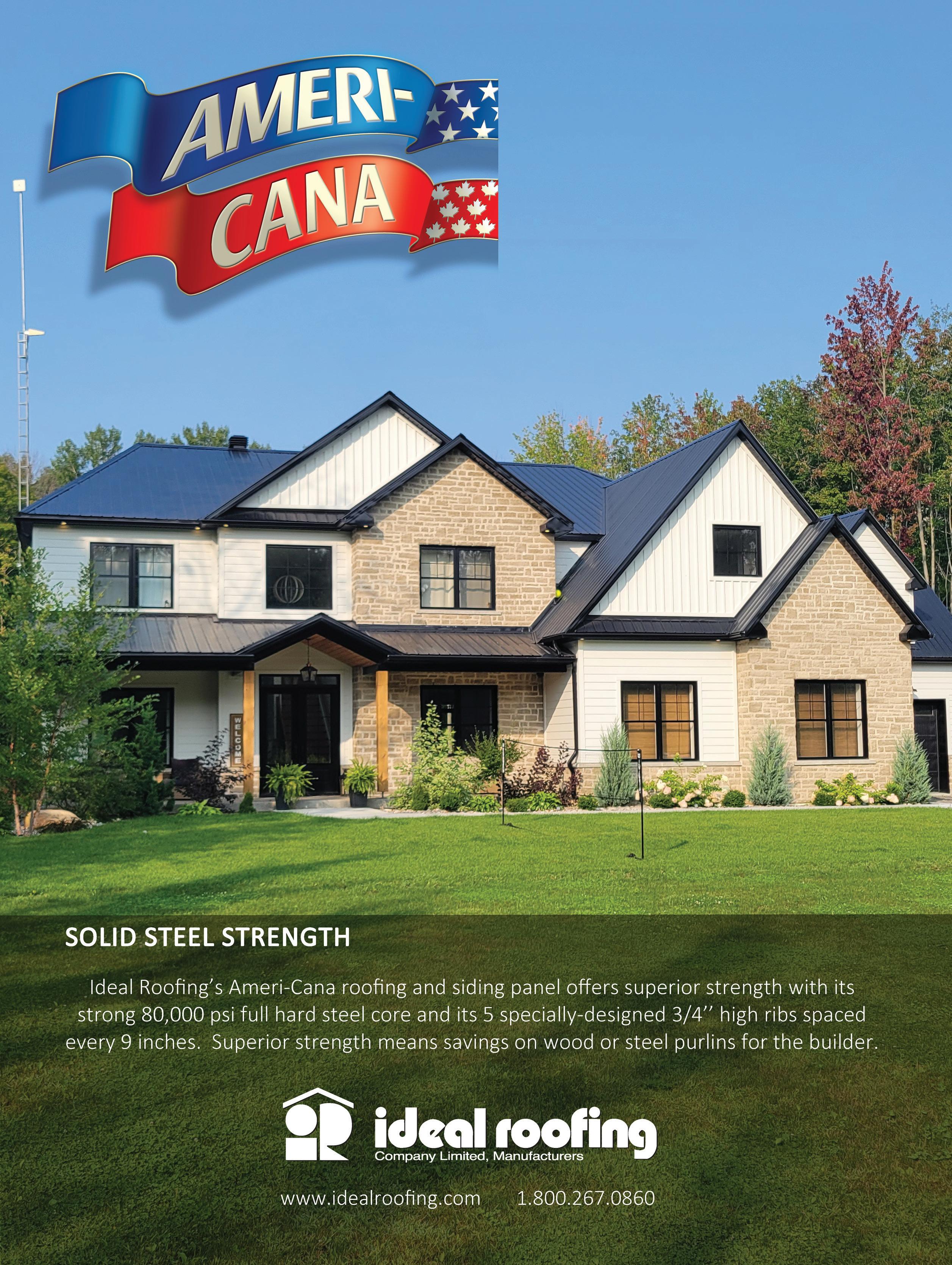
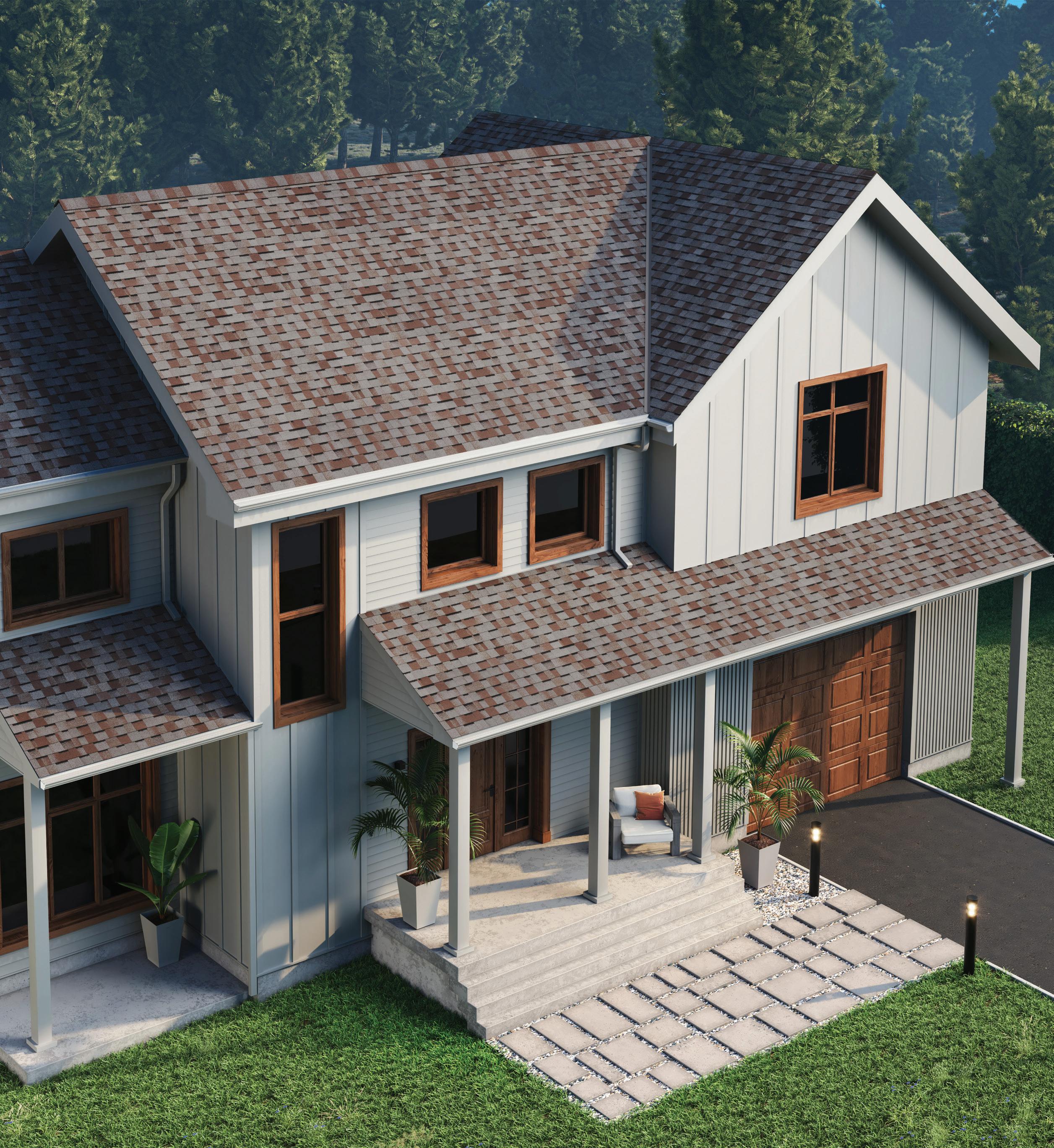













ROOFING COLOUR TRENDS
It may come as little surprise that darker colours remain popular for roofing, as they do in other areas of the home’s facade.
“The going trend over the last few years has been to a darker family of colours as well as a transition to a less glossy Matte series of finishes,” McPhail says. “Our regular WeatherXL Black and Ebony Matte have experienced substantial growth compared to other colours.”
Of course, some builders and homeowners are going a different direction, notes Nathalie Lambert, Marketing Director at Saint-Gobain with copper-toned roofs gaining popularity across Canada.
“While black is still the most popular roofing choice, coppery brown tones are gaining traction in exterior home decor – from outdoor furniture to garden accessories – and so we’re seeing a movement towards consumers choosing these shades for their roofs as well.”
She says this colour is part of the back-to-nature trend and blends well with tree-lined or rustic environments. She points to BP of Canada products like Signature Mesquite and Toscana as examples. “What’s more, they complement a variety of architectural styles and have an organic vibe that stands the test of time.”
Lambert adds that grey hues featuring hints of copper or tan are also growing in popularity, like BP’s Dublin and Edinburgh Signature shingles. Using BP’s Profusio tool, highly customized roofing colours are also possible, she adds.
Colour and design choices are evolving, Gardenits suggests, and he says Westman Steel has an extensive colour palette and design options that cater to these emerging trends.
“While traditional shades like charcoal, black, and slate remain top choices, there’s a rising demand for bolder colours such as deep reds and forest greens, particularly in residential and commercial sectors.”

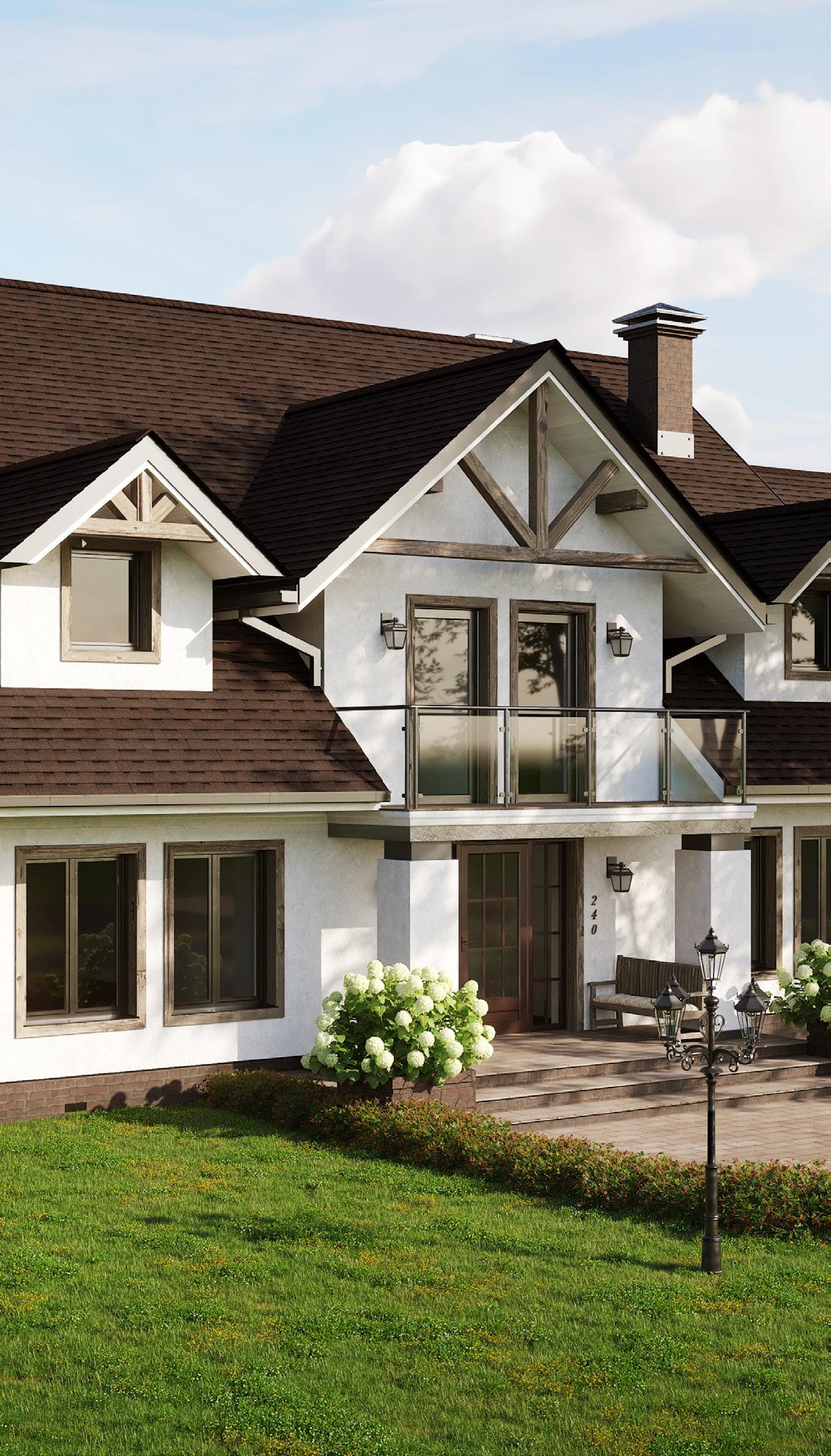
Photos courtesy of Building Products of Canada

As with all aspects of a home’s façade, many homeowners want to put their unique thumbprint on their roof’s appearance, so It’s becoming less cut and dry what to expect.
“When it comes to roofing aesthetics, there are no strict rules anymore,” Davidson says. “Homeowners are moving beyond traditional choices, blending monochromatic, classic shades with bolder, more expressive colours to better reflect their personal style.”
Cito notes that his company’s Timberline HDZ shingles are available across a wide range of colours, and that homeowners can “try them on for size” using its GAF Virtual Remodeler.
SUSTAINABILITY AND ENERGY EFFICIENCY
The environment looms large for most homeowners both from the perspective of energy–efficiency and product performance.
“The consumer’s demand for more sustainable products is a key driver in all segments of the building materials industry. Vicwest is meeting this demand with our Planet Passionate strategy
that aims to improve our impact on three big global issues: climate change, circularity and protection of our natural world,” McPhail says.
That translates into the company’s steel products being made from recyclable material and being fully recyclable, greater use of solar power and rainwater collection at its manufacturing facilities, reduced landfill waste, and more.
In steel roofing, energy-efficient roofing solutions, including cool roofing technology that reflects more sunlight and reduces heat absorption, are gaining traction among environmentally conscious homeowners and businesses, Gardenits says.
It’s not just homeowners calling for greater sustainability, adds McPhail.
“Designers and architects alike share in the sustainable vision for the future, pushing this segment into the institutional, commercial, and industrial segments of the markets,” he says.
“The path for more responsible, sustainable and durable products is clear, and steel roofing is firmly on this path.”
Photo courtesy of Vicwest
COMBATING EXTREME WEATHER
With severe weather events on the rise, roofing vendors are innovating to make sure their products deliver the performance needed.
With that in mind, Lambert professes the importance of making sure to select high-performance roofing products that provide maximum resistance and protection against high winds and wind-driven rain, ice build-up and hail. She also adds to consider the regional climate.
She says her company’s Signature shingles are designed to withstand the harshest weather while offering a balance of performance, lifestyle and individuality. The company’s Weather-Tite® Plus technology is guaranteed to withstand winds of up to 220 km/h (a Category 4 hurricane).
Davidson points to the recent hailstorm in Calgary, which caused widespread damage, to how important it is to select materials designed to withstand such conditions. He says contractors are shifting towards performance products, like IKO Nordic Performance Shingles, with higher impact ratings for better protection and long-term value.
“Proven Performance is at the heart of everything IKO does, we’re proud to share that all three of our laminate shingle lines (Cambridge, Dynasty and Nordic) now feature at least a Class 3 impact resistance rating,” he says, with the company’s Nordic shingles boast a Class 4 rating. “These upgrades provide homeowners with peace of mind knowing their roof is designed to endure the toughest conditions, no matter what Mother Nature throws their way.”

Photo courtesy of IKO Canada

Cito notes Timberline HDZ shingles are eligible for the WindProven Limited Wind Warranty when installed with the required combination of four qualifying accessories, which provides peace of mind amidst the increasing weather events.
Rocchio says his company’s Wakefield Bridge steel shingles withstand high winds and hail and prevent the spreading of fires. Metal roofing offers protection from wildfires since wind-blown embers can ignite combustible roofs and spread.
Gardenits notes that Westman Steel’s enhanced PVDF (polyvinylidene fluoride) finishes provide superior resistance to fading, corrosion, and extreme weather conditions.
With the increase in inclement weather, contractors need to know they are installing tried and tested products, McPhail says. He adds the company has developed an innovative Quadra-Loc technology to ensure exceptional
watertightness and virtually eliminate the risk of uplift caused by high winds and heavy rains.
Rising insurance claims may be an opportunity for contractors. Cito suggests they use his company’s GAF ScopeConnect resource (found on its website). He calls it a valuable, cost-effective tool.
“It’s easy to receive a complete insurance scope of work with industry-standard formatting, often in under 24 hours. This service has helped many contractors break into insurance restoration work or streamline their current processes.”
INNOVATIONS IN SHINGLE TECHNOLOGY
Manufacturers are innovating around more than performance; aesthetics and installation improvements are also an R&D focus.
“The quality of the coating systems that go onto our products continues to evolve,” McPhail says. “This speaks to the innovation behind the market demand. 40-year warranties are now the norm.
Photo courtesy of Westman Steel Industries
(And), we have recently seen the introduction of more realistic wood-grain finishes: our Expressence finishes.”
For an easier and more efficient install, Cito points to Timberline HDZ shingles’ use of LayerLock technology with the StrikeZone nailing area that he says provides the industry’s widest nailing zone to offer 99.9% accuracy. In addition, they feature the company’s proprietary StainGuard Plus Algae Protection technology.
“Advancements in steel roofing technology continue to enhance durability, efficiency, and ease of installation,” Gardenits says. “Improvements in steel panel interlocking systems are making installations quicker and more secure, reducing labour costs and increasing overall efficiency.”
Technology is “shaking things up in the roofing industry,” Davidson says. “Making life easier for contractors, builders, and homeowners.”
“AI-powered analytics, aerial measurements, and remote assessments are becoming the norm, helping contractors work smarter, not harder. Drones, 3D modeling, and augmented reality are also on the rise, allowing for better project planning and visualization.”
IKO recently revamped its website to use technology to help contractors and homeowners alike, featuring an instant quote feature and time-saving tools to help installers grow their business, and expert design advice, insights and inspiration for householders.
BUYING CANADIAN
The year ahead will be a dynamic one with tightening environmental regulations, growing demand for skilled labour and, of course, the
risk of tariffs and trade policies, Gardenits says. “Tariffs and trade policies may influence steel pricing, making it essential for contractors to stay informed about market fluctuations.”
With tariff fear looming large, perhaps one of the bigger trends of 2025 is the move to buy Canadian, McPhail suggests. He boasts his company does just that. “Over 95% of the steel Vicwest purchases is Canadian. Our manufacturing facilities are national. Our products are produced by Canadians for Canadians.”
Rocchio also speaks proudly of Ideal Roofing’s Canadian roots and support for Canadian steel. “Ideal Roofing is a fourth-generation, family-owned, manufacturing company since 1929. We are Canadian-owned and operated.” He notes last year Ideal Roofing opened its third plant in Moncton, NB. “We proudly support the Canadian steel mills. The support we receive allows Ideal Roofing to continue to invest in our more than 350 employees, and local economies.”
With tentative times ahead, McPhail urges contractors, builders and homeowners to look to Canadian roofing options.
“We are coming off a very uncertain time of high inflation creating higher interest rates fueling consumer hesitation. This hesitation has been replaced by the fear of tariffs from the trade war initiated by the US against Canada and the world,” he says.
“How long this drags on has yet to be determined. The longer this cloud hangs over our heads, the longer consumer hesitancy will exist in our market, I would urge contractors to know what products they are using, (and) support Canadian manufacturing of building materials.” —

Photo courtesy of Ideal Roofing
IMPORTANT UPDATE

Contractor Advantage is going digital!
As part of our Paperless Initiative, Castle Publications will be phasing out printed publications in the coming months and transitioning to a digital format. Our new digital edition can be delivered straight to your inbox in an easy to view format.
We thank you for your readership and hope you will continue enjoying the same great editorial and all upcoming issues of Contractor Advantage by subscribing online to the digital version.

